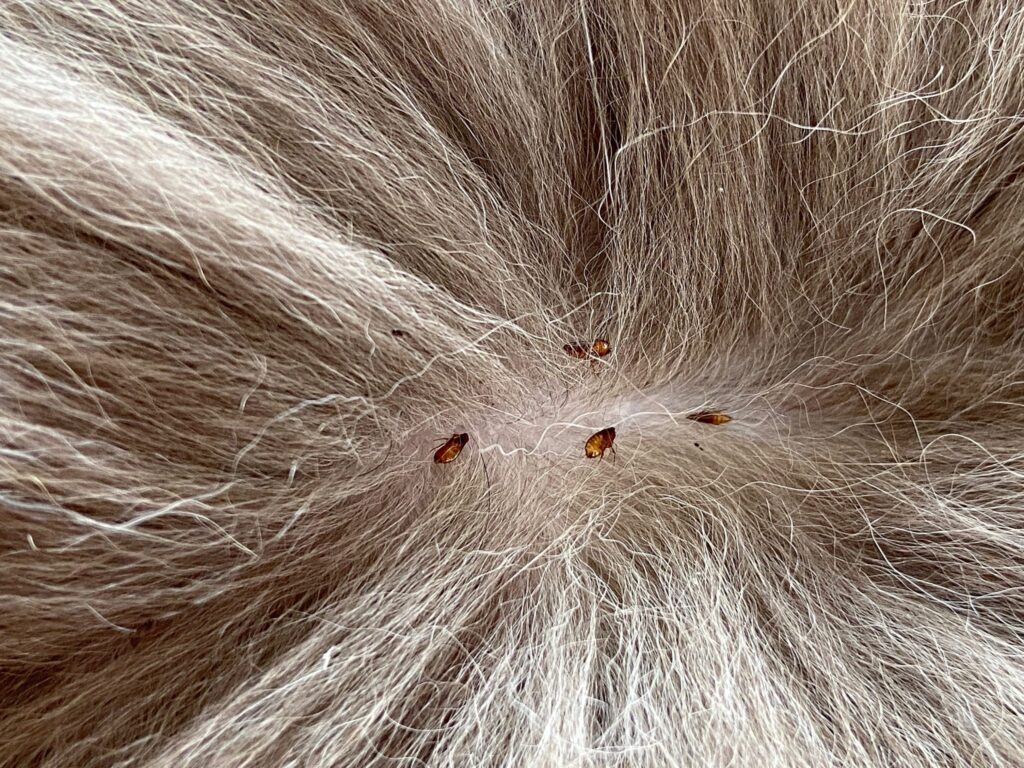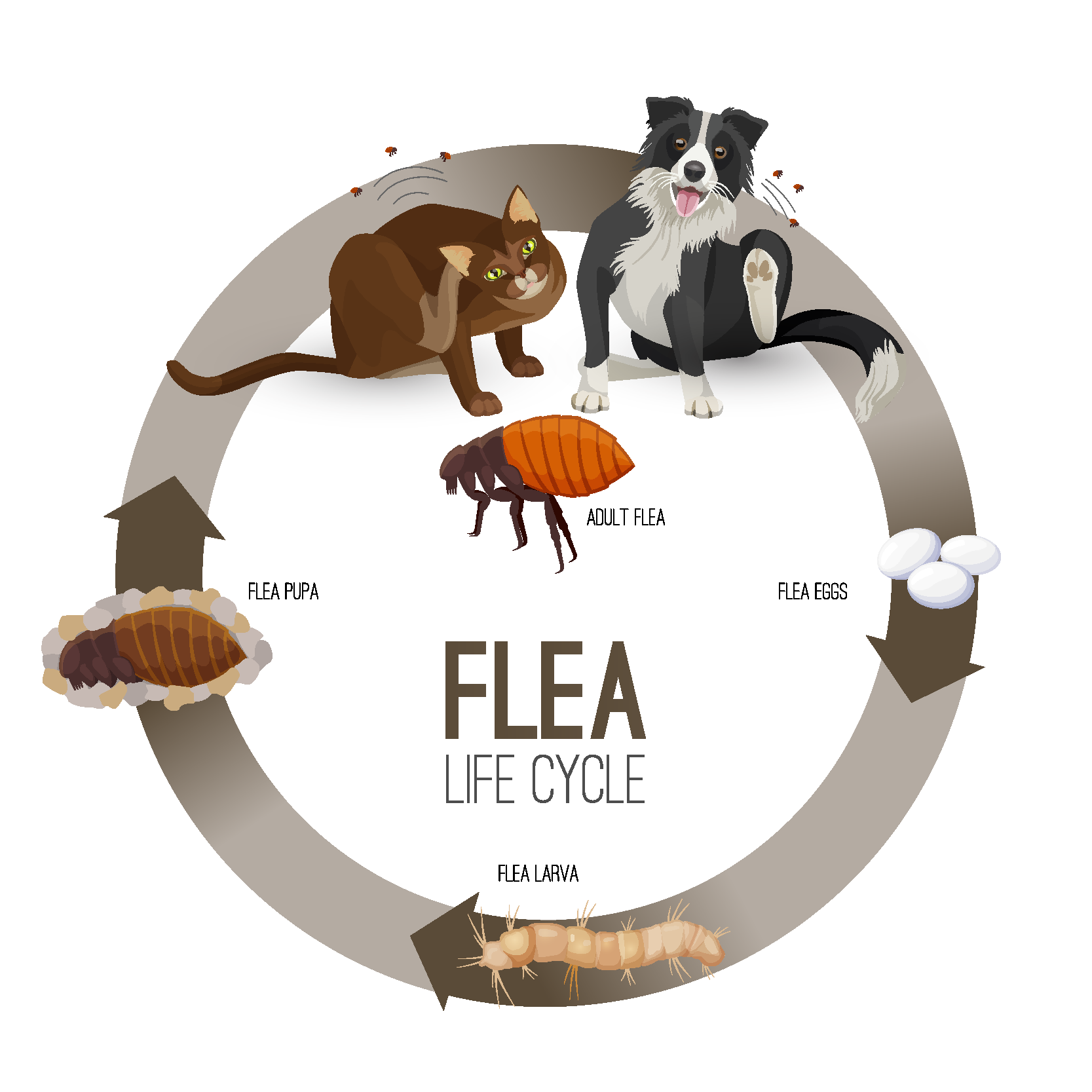
Just thinking about these pests makes your whole body itch. If you have pets, you have to deal with this issue repeatedly. Therefore, it is best to take preventive action before it is too late and you have brought these parasites into your home. In this article, we would like to give you help for prevention and, if it is too late, for initial treatment, as well as general flea knowledge.
The benefits of fleas
Unfortunately, fleas have no natural predators, so humans have to protect themselves and their pets from them.1
The dangers of fleas (for humans and pets)
Since fleas feed on blood, they are of medical and veterinary importance, both because of the irritation caused by their bites and because of their role in transmitting pathogens.2
The bites can cause itching and also inflammation of the skin. Due to good hygienic conditions, hardly any diseases are transmitted by fleas in Central Europe today. Nevertheless, there can still be individual cases of pest diseases worldwide, but these occurred much more frequently in the past than they do today. In tropical countries, besides other diseases, murine typhus can also be transmitted by fleas.
Dog and cat fleas can be intermediate hosts of the cucumber tapeworm (Dipylidium caninum), which occurs in these pets and can also (rarely!) occur through accidental ingestion of fleas in children or adults. Dogs and cats usually react to flea bites with allergic reactions because they are allergic to components of flea saliva. A single flea can trigger allergic flea eczema, which can also occur in humans and cause severe symptoms.3
Properties and characteristics of fleas
Fleas are wingless, blood-sucking ectoparasites (live on the body surface of their hosts). Adult fleas feed exclusively on the blood of warm-blooded hosts, which they need for survival and reproduction. Therefore, fleas are the most common parasites in cats and dogs and are frequently encountered as household pests.
There are two different groups of fleas.
Host fleas spend their entire adult life on the host, while nest fleas live mainly in the host’s nest and only crawl onto the host to take blood meals.4
Fleas are rarely host-specific. Interestingly, in Europe, the most common flea parasitising on humans is the cat flea. Dog fleas are relatively less common. It is typical for the flea to bite several times in a row on a line, a so-called flea ladder, as it is easily disturbed and repeatedly makes test bites before it has hit a blood vessel and can suck blood.5
There is also the human flea (Pulex irritans), which is very rare in Central Europe.6
Our report focuses predominantly on fleas that can be a nuisance in our homes, so we have focused on cat and dog fleas.
Appearance
It is impossible to tell the difference between cat fleas (Ctenocephalides felis) and dog fleas (Ctenocephalides canis) with the naked eye.
The fleas are about 3 mm in size, wingless and reddish brown to black. Their body is laterally flattened, and they have well-developed, strong back legs with which they can jump very far. Fleas have spines protruding backwards all over their body, which help them to move between the hairs of their host animal. Both cat and dog fleas also have a row of very heavy spines on the front of the head and the back of the first body segment (spine combs).
One of the differences is that the head of the female cat flea is twice as long as it is high, and that of the female dog flea is less than twice as long as it is high.7 Furthermore, in the dog flea, the first spine of the head spine comb is at most half as long as the second; in the cat flea, the first two spines are about the same length.8

How many times have your desk and its items been cleaned and sanitized?
Prevention with BIO/CLEAN KILL
Now that we know that fleas are not only persistent and survive long periods of starvation but can unfortunately also spread their eggs very easily throughout the home through pets, one should adequately protect one’s home and beloved four-legged friends and take preventive action to inhibit a possible nesting of these parasites.
Bio/Clean Kill Classic and Bio/Clean Kill (Extra) micro-fast can be used in the home anywhere pets frequently lie down or sleep to keep fleas away. Also, spray the sofa, dog or cat bed when the pet is not in the room. Treat all areas with cracks and crevices near where pets lie and where insects may rest between meals (behind baseboards, under windows, door mouldings, etc.).
Best to allow the treated areas to dry before your pets enter the room/their resting place again.
In general, increased vacuuming can also be helpful in containment, and control. Simply spray the inside of the bag with Bio/Clean Kill beforehand or, in the case of a bagless vacuum cleaner, clean and empty it carefully afterwards.
In the case of an acute infestation, action should always be taken quickly, and the vet should also be consulted to be able to guarantee the animal the best possible treatment against the troublesome parasites.
Sensational jumping power
Fleas have enormous bouncing power! They have a distinctive third pair of legs that enable them to jump up to one metre. Normal muscle strength would not be enough for this, but fleas have a so-called resilin pad in their hind legs. This elastic protein, resilin, stretches like a bow and enables the fleas to make such high jumps.12
However, there is one small disadvantage: fleas cannot really control their jumps and usually do not land where they want to.13
Click here to see: WORLD OF FLEAS – REFERENCES